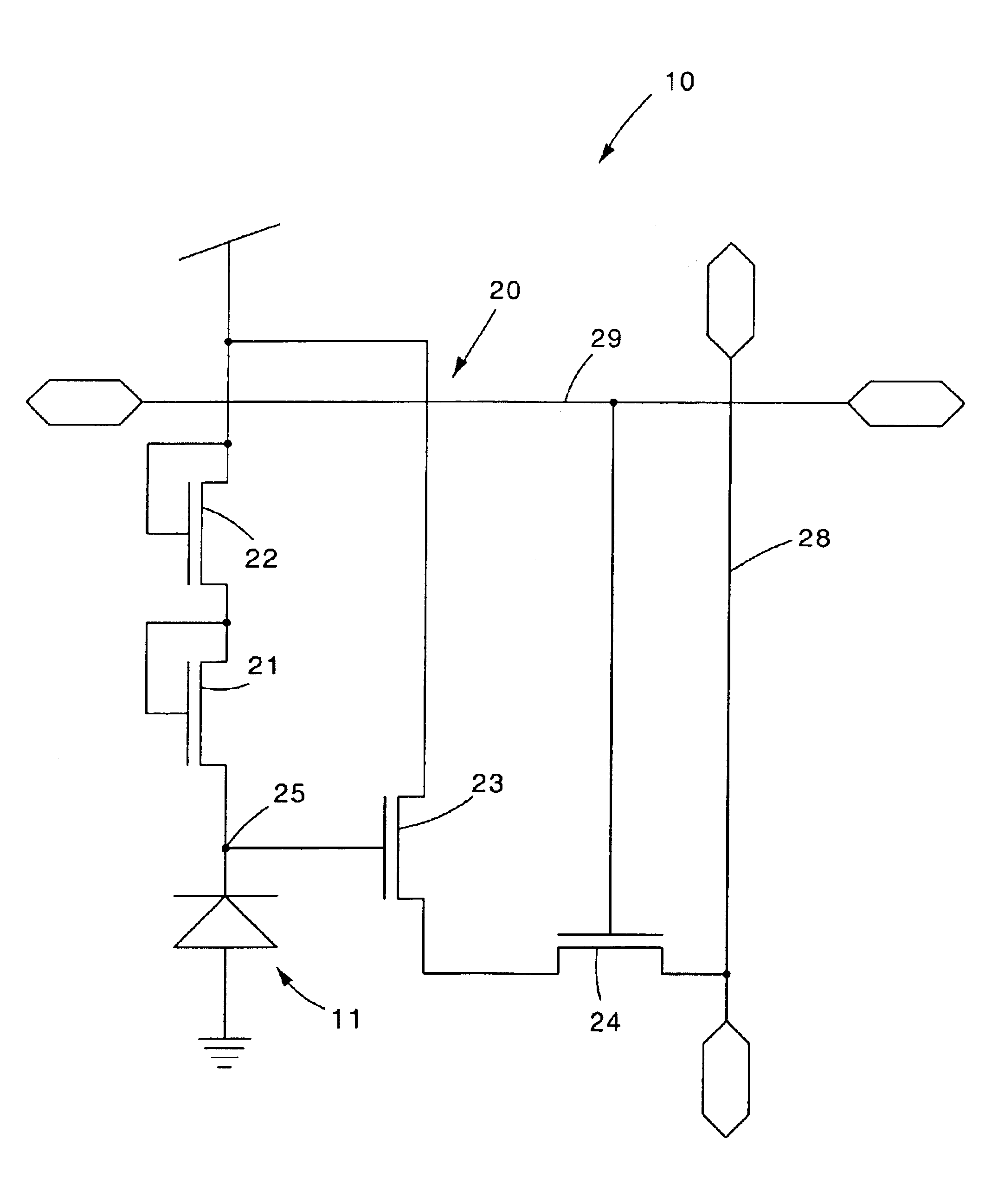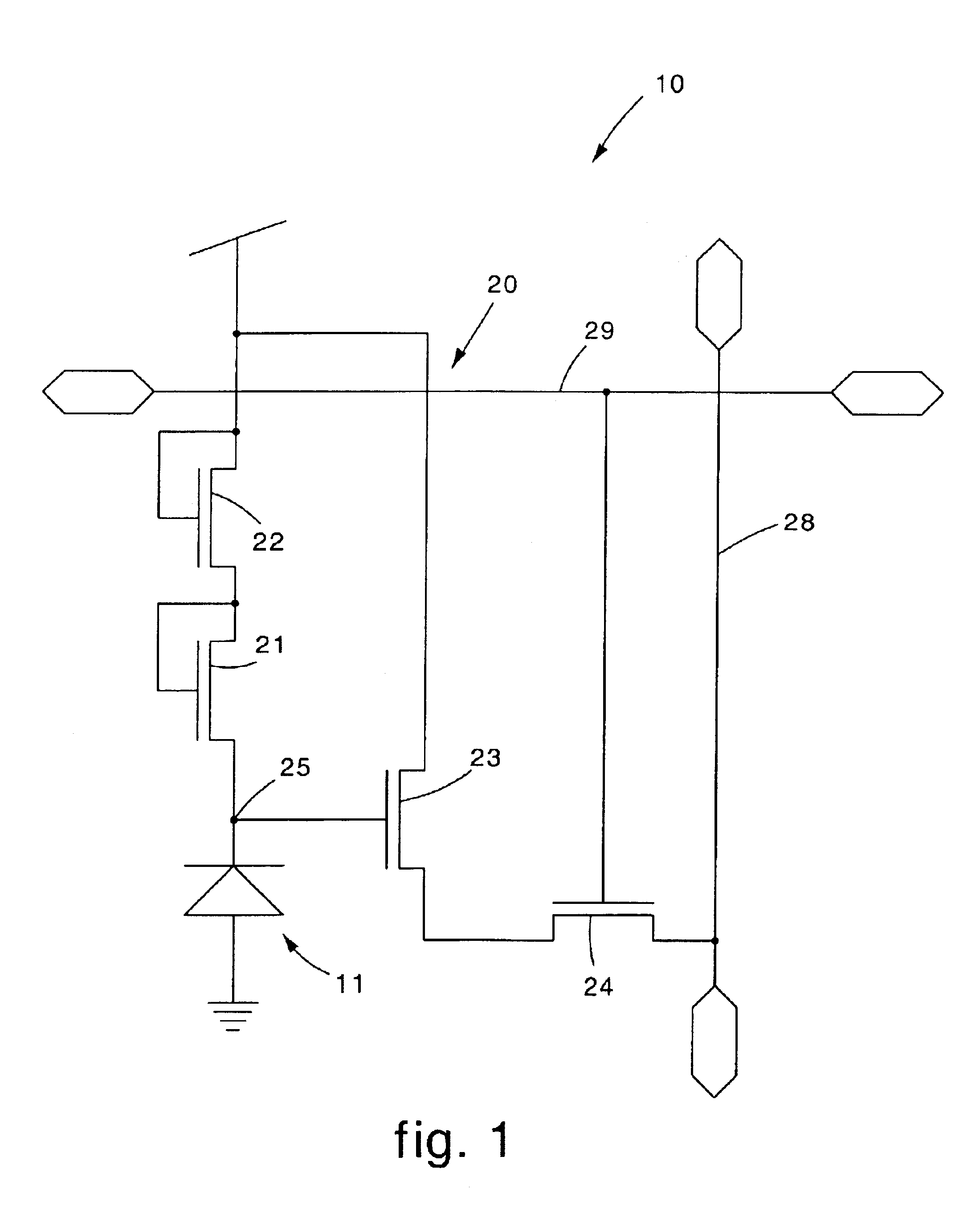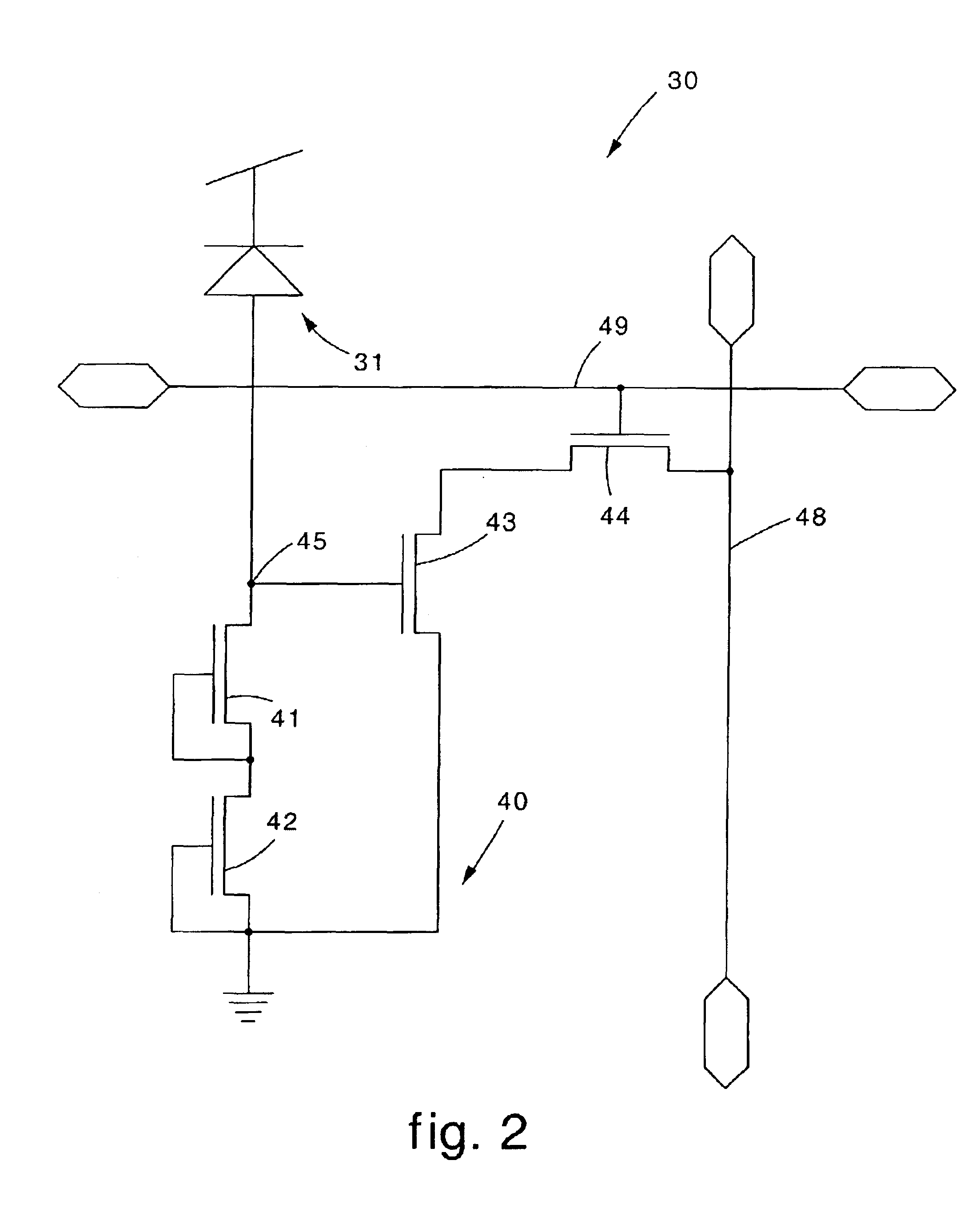Photo-sensitive element for electro-optical sensors
a technology of electro-optical sensors and photo-sensitive elements, applied in the field of photo-sensitive elements, can solve the problems of not being able to arbitrarily select one or more, not being able to operate optimally in the presence of light, and not being able to achieve the effect of good immunity and efficient processing
- Summary
- Abstract
- Description
- Claims
- Application Information
AI Technical Summary
Benefits of technology
Problems solved by technology
Method used
Image
Examples
Embodiment Construction
[0031]With reference to the attached drawing of FIG. 1, a photo-sensitive element or pixel 10 according to a first embodiment of the invention consists of an inversely polarized diode 11 of N-type, two transistors of N-type, respectively a first 21 and a second 22, to polarise the photo-diode 11, and an amplification and reading circuit 20 comprising two transistors, respectively third 23 and fourth 24.
[0032]The pixel 10 is of the type able to detect light of a wavelength between 400 and 1000 nm and an intensity which varies in an interval of at least 6 decades, between 10−3 and 10−3 W / m2, and is able to constitute the single cell of a multiple cell matrix sensor made entirely with CMOS technology and hence able to be integrated in a chip.
[0033]The diode 11 is made by a joint between an N type insulated diffusion, medium doped, called Nwell, and the silicon substrate which is weak doped. The interface area between the two parts of the diode is emptied of free loads and characterized...
PUM
 Login to View More
Login to View More Abstract
Description
Claims
Application Information
 Login to View More
Login to View More - R&D
- Intellectual Property
- Life Sciences
- Materials
- Tech Scout
- Unparalleled Data Quality
- Higher Quality Content
- 60% Fewer Hallucinations
Browse by: Latest US Patents, China's latest patents, Technical Efficacy Thesaurus, Application Domain, Technology Topic, Popular Technical Reports.
© 2025 PatSnap. All rights reserved.Legal|Privacy policy|Modern Slavery Act Transparency Statement|Sitemap|About US| Contact US: help@patsnap.com



